

A place known since antiquity times: this promontory, located at the meeting point of the small river Amasse with the Loire river, offers both a shelter and a position to observe the surrounding country. It is therefore normal that at the top of its 40-metre cliffs populations settled very early on. A Neolithic observation post, the site that will one day house the castle we know today housed an oppidum. The Celtic people of the Turones, who gave their name to the Touraine (region of Tours), built its main city at this place.
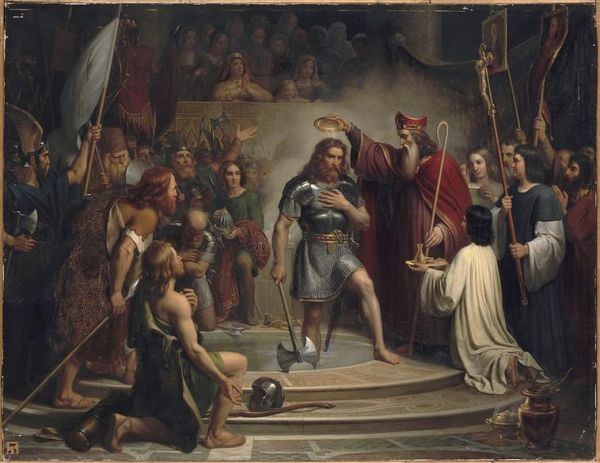 Then, when Gaul became Gallo-Roman, the promontory of Les Châteliers was under Roman occupation. Later, at the time of the fall of the Roman Empire, the site played a key role in the meeting between Alaric, the king of Visigoths, and Clovis, the king of the Franks and first christian king of the lands which became later the nation France.
Then, when Gaul became Gallo-Roman, the promontory of Les Châteliers was under Roman occupation. Later, at the time of the fall of the Roman Empire, the site played a key role in the meeting between Alaric, the king of Visigoths, and Clovis, the king of the Franks and first christian king of the lands which became later the nation France.
Once the troubled period of the Viking raids had passed, Amboise was attached to the domain of the Counts of Anjou and then passed into the hands of the Amboise-Chaumont family. In 1431, in this complex period which marked the end of the Hundred Years War, the house of Amboise-Chaumont was accused of conspiracy and treason against a relative of King Charles VII. She lost the castle of Amboise. His majestic royal history then began !
The king Charles VII and his wife Marie d'Anjou arrived in Bourges around the year 1420, marking the beginning of the presence of the kings of France in the region of the Loire Valley. If Charles VII, who became king of France and victorious over the English, avoided the castle of Amboise in favour of Chinon and Loches, his son Louis XI chose the Amboise to be the residence of his wife, the Queen Charlotte of Savoy. His son the dolphin who reigned under the name of Charles VIII was born there in 1470 and the royal history of the royal castle of Amboise really began. A new dwelling and an oratory were built to the south of the castle.
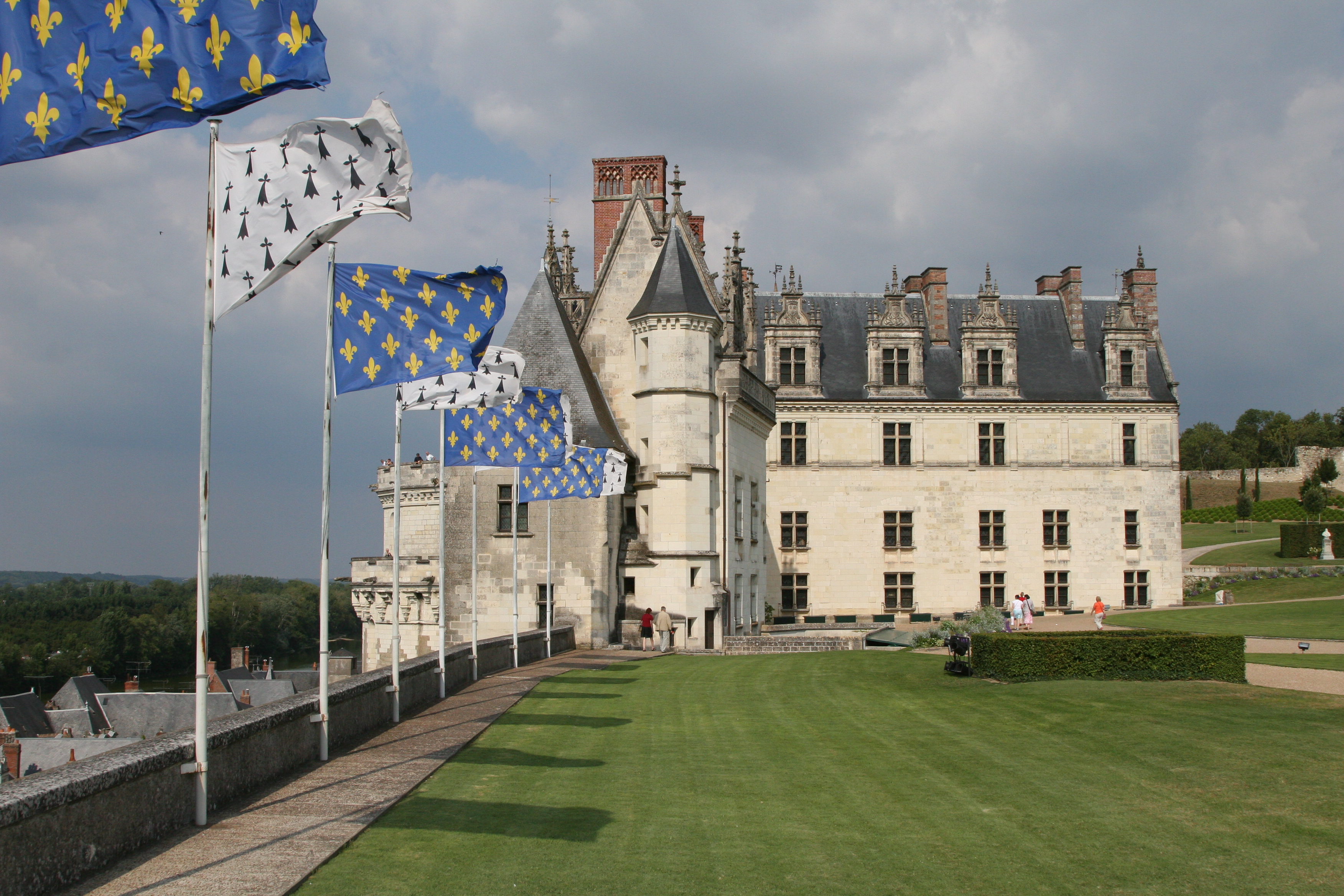 Charles VIII and his wife Anne of Brittany devoted a lot of attention, time, energy and subsidies to the beautification and expansion of Amboise. The ancient, impregnable medieval fortress is transformed into a sumptuous Gothic palace. Two new ceremonial houses were erected, and the oratory was replaced by a chapel (see the part Anectdote). Two monumental bridle towers connect the city to the castle's terraces. Gardeners, architects, sculptors contribute to the enjoyment of the site.
His cousin the Duke of Orleans succeeded him. Louis XII lived mainly in Blois, but François de Valois-Angoulême, who would be king under the name of François Ith, grew up in the castle of Amboise. Nevertheless, he continued the work, finishing to build several part of the castle. Thus, François I continued the embellishment works even after planning the construction of Chambord.
Charles VIII and his wife Anne of Brittany devoted a lot of attention, time, energy and subsidies to the beautification and expansion of Amboise. The ancient, impregnable medieval fortress is transformed into a sumptuous Gothic palace. Two new ceremonial houses were erected, and the oratory was replaced by a chapel (see the part Anectdote). Two monumental bridle towers connect the city to the castle's terraces. Gardeners, architects, sculptors contribute to the enjoyment of the site.
His cousin the Duke of Orleans succeeded him. Louis XII lived mainly in Blois, but François de Valois-Angoulême, who would be king under the name of François Ith, grew up in the castle of Amboise. Nevertheless, he continued the work, finishing to build several part of the castle. Thus, François I continued the embellishment works even after planning the construction of Chambord.
The history of Amboise is consequently inseparable from the history of France. For example, Amboise is the seat of a conspiracy known as the Amboise Conjuration, a struggle beween catolics and protestants. The great catolic queen Catherine de Médicis decided then to reinforce the castle's defences by building a bastion at the east of the castle.
Amboise gradually lost its importance under the reign of the kings Charles IX and Henry III, ceasing to become the seat of the Court of France at the end of the XVIth century. Although it did not receive the kings of France in a sustainable way, the castle remained a place where the kings used to spend time when they moved around the kingdom:
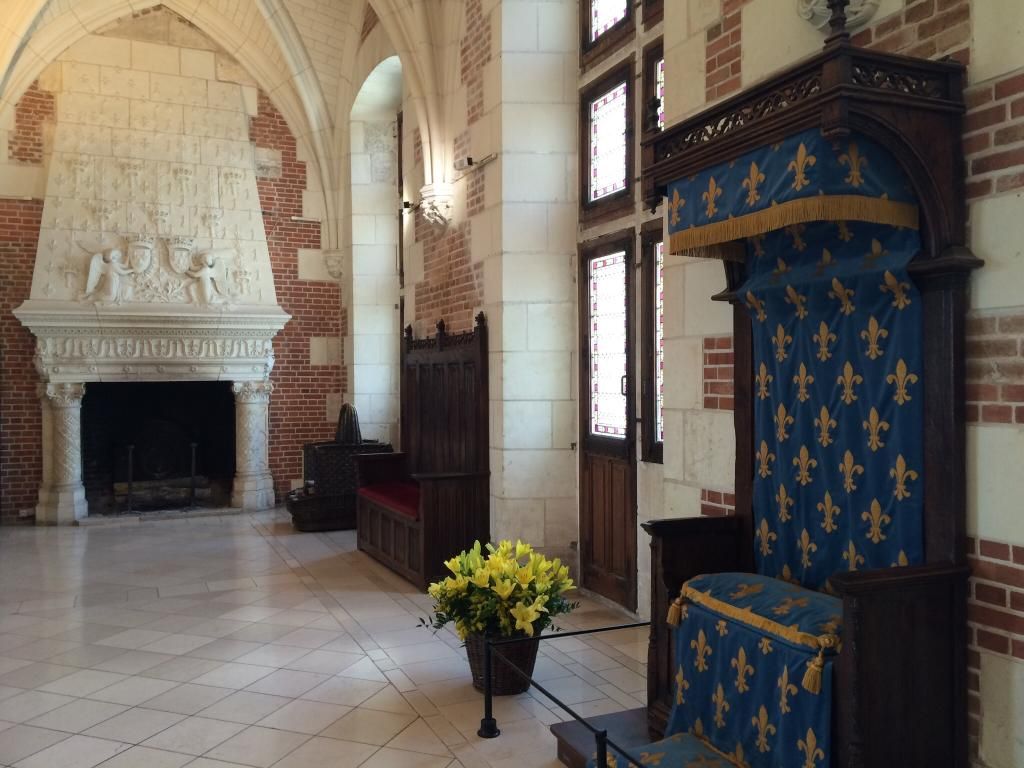 Henri IV, Louis XIII, Louis XIV regularly stayed at Amboise. Louis XIII, in particular, decided to strengthen the castle's defences to preserve its key role in the kingdom's defence. But the castle deteriorated throughout the 17th century and even served time as a prison for famous prisoners. Nicolas Fouquet, builder of Vaux le Vicomte, was locked up there under the care of the famous musketeer of the king of Artagnan. It spent some time in the hands of Étienne-François, Duke of Choiseul, Minister of Louis XIV, who abandoned it in favour of the neighbouring domain of Chanteloup.
Henri IV, Louis XIII, Louis XIV regularly stayed at Amboise. Louis XIII, in particular, decided to strengthen the castle's defences to preserve its key role in the kingdom's defence. But the castle deteriorated throughout the 17th century and even served time as a prison for famous prisoners. Nicolas Fouquet, builder of Vaux le Vicomte, was locked up there under the care of the famous musketeer of the king of Artagnan. It spent some time in the hands of Étienne-François, Duke of Choiseul, Minister of Louis XIV, who abandoned it in favour of the neighbouring domain of Chanteloup.
It was only after the death of the duke that the history of the castle returned to its rich past. It was attached to the Crown and then transferred to Louis-Jean-Marie de Bourbon, Duke of Penthièvre. He carried out several works at the end of the XVIIIth century, including the creation of a panoramic dining room in the Minimes tower and the refoundation of the gardens. But his major projects were stopped during the Revolution: in 1793, the castle was confiscated and transformed into a jail.
Major renovation projects are being undertaken to restore it as it was at its great period. The only adventures experienced by the castle at the time were due to the Second World War, the building suffering from fighting in May 1940 and a bombardment in July 1944.
The castle is managed since 1974 by the Saint-Louis Foundation, which takes care of it and welcomes the public.
In the castle gardens, there exists a chapel called Saint-Hubert fom the name of the saint patron of hunters.
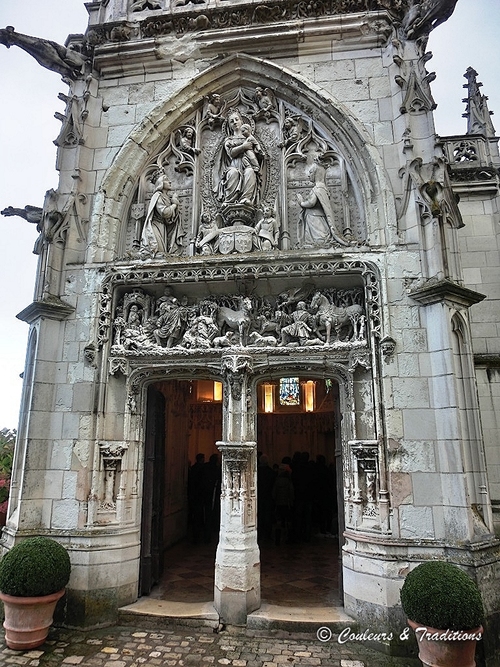 The Saint-Hubert chapel was built and sculpted between 1491 and 1496 by Flemish artists in the pure flamboyant Gothic taste of Touraine stone and Tuffeau chalk (see the features here) on the orders of Charles VIII, before he discovered Italian architecture style.
The Saint-Hubert chapel was built and sculpted between 1491 and 1496 by Flemish artists in the pure flamboyant Gothic taste of Touraine stone and Tuffeau chalk (see the features here) on the orders of Charles VIII, before he discovered Italian architecture style.
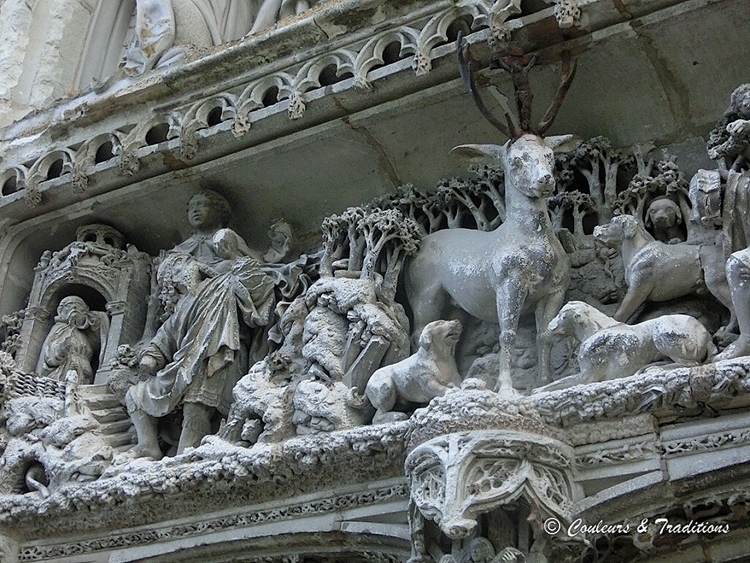 The chapel then served as an oratory for Anne de Bretagne, before becoming the presumed last resting place of the body of Leonardo da Vinci, who died in Amboise in 1519. His grave containing his bones can be seen inside the chapel. According to the last wishes of da Vinci, sixty beggars followed his procession until Amboise castle.
The chapel then served as an oratory for Anne de Bretagne, before becoming the presumed last resting place of the body of Leonardo da Vinci, who died in Amboise in 1519. His grave containing his bones can be seen inside the chapel. According to the last wishes of da Vinci, sixty beggars followed his procession until Amboise castle.
All the informations are availables on the website of the Château d'Amboise.
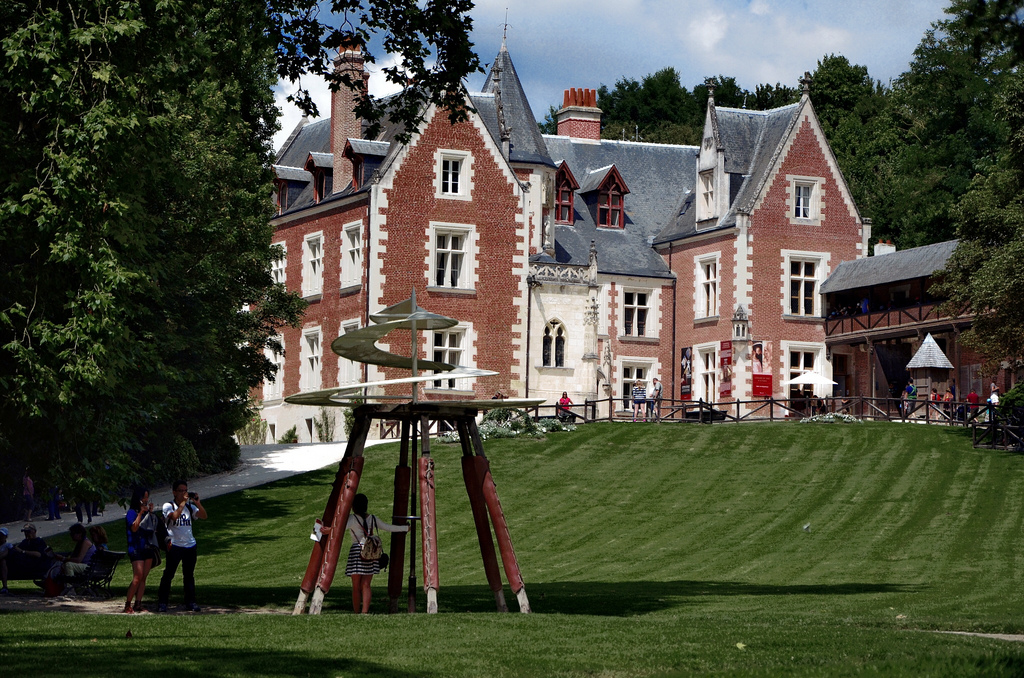 This is a must-see place when visiting Amboise. This is a small castle (or manor) where Leonardo da Vinci has lived his last years. This castle and the parc were originally the residence of french kings during several decades (1470-1516), then the king François Ier decided to offer it to his guest Leonardo da Vinci. The mannor was linked with the castle of Amboise via a tunnel. Today, the Clos-Lucé is a museeum about the work of da Vinci. The park contains many inventions of da Vinci and based on drawings of the master of the Renaissance.
This domain is only at 5 minutes from the royal castle of Amboise.
This is a must-see place when visiting Amboise. This is a small castle (or manor) where Leonardo da Vinci has lived his last years. This castle and the parc were originally the residence of french kings during several decades (1470-1516), then the king François Ier decided to offer it to his guest Leonardo da Vinci. The mannor was linked with the castle of Amboise via a tunnel. Today, the Clos-Lucé is a museeum about the work of da Vinci. The park contains many inventions of da Vinci and based on drawings of the master of the Renaissance.
This domain is only at 5 minutes from the royal castle of Amboise.
More informations Here
 In 1761, the Duke of Choiseul, then Prime Minister of Louis XV, bought the estate of Chanteloup, shortly after being appointed Governor of Touraine. As early as 1765, he had the castle expanded and updated and the gardens enlarged. Fallen into disgrace, he was exiled from Paris in December 1770 and settled in Chanteloup, where he completed the renovation. He held a brilliant assembly there, considered to be a rival of Versailles.
The " Folie of the Duke of Choiseul " or "Monument dedicated to Amitié " was built by the Duke in 1775, after his exile from the court of King Louis XV, as a tribute to all his friends who had shown him their loyalty.
In 1761, the Duke of Choiseul, then Prime Minister of Louis XV, bought the estate of Chanteloup, shortly after being appointed Governor of Touraine. As early as 1765, he had the castle expanded and updated and the gardens enlarged. Fallen into disgrace, he was exiled from Paris in December 1770 and settled in Chanteloup, where he completed the renovation. He held a brilliant assembly there, considered to be a rival of Versailles.
The " Folie of the Duke of Choiseul " or "Monument dedicated to Amitié " was built by the Duke in 1775, after his exile from the court of King Louis XV, as a tribute to all his friends who had shown him their loyalty.
This tour is located at 10 minutes of Amboise castle. More informations on visits Here.